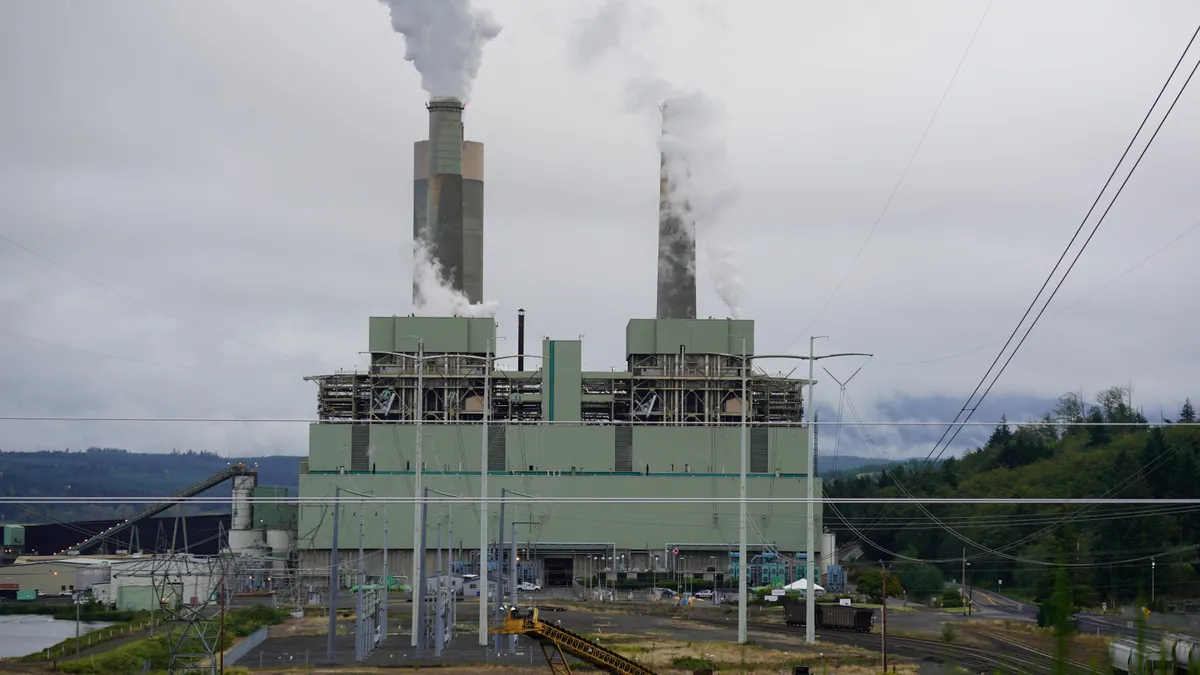Large electricity consumers are looking for ways to reduce their costs and many are also seeking cleaner energy options. That's pretty standard for a power sector being transformed by new technologies and distributed resources. But would a large power user be interested in selling its excess power back to the community?
"I don't think we have any interest in selling electricity," said Brian Janous, director of energy strategy for Microsoft.
"We feel much the same," added David Ozment, senior director of energy for Wal-Mart.
"We really have no interest in reselling power," explained Jed Richardson, global energy director for Johnson & Johnson.
The moment came during a presentation on "Surviving the Coming Utility Revolution," a webinar hosted by GreenBiz and the Shelton Group. The three company officials discussed how their organizations are adapting to a changing grid and how they believe the utility industry should change to stay relevant.
What big power users want
Fundamentally, all three said that utilities need to adapt their offerings and develop greener strategies. But they agreed the centralized grid isn't going anywhere just yet — in part because large corporations are seeking greater energy efficiency but want to stay focused on their core business.
Microsoft wants utilities to help customers deploy distributed generation
At Microsoft, Janous said the company is looking to integrate and invest in greater efficiency across the supply chain, with an eye towards three goals: deploying hyper-efficient distributed energy resources; delivering low-cost renewable energy through utility-scale projects; and helping foster the next generation of energy technologies and systems.
The company runs enormous data centers about the size of a Wal-Mart Supercenter, but which consume 15-20 times as much power. And for every megawatt of server load, the facilities have a megawatt of distributed generation on site, Janous said. For needs like that, rooftop solar just won't be enough.
"Distributed generation is not something that is an option for us," Janous said. "It is a part of our core infrastructure."
"The next 100 years will certainly not be as dominated by central station power as the last 100 years; however, I don't believe distributed generation will negate the need for the centralized power grid," Janous said. "In fact, once a generation or storage system becomes separated from the grid ... the value of that asset declines considerably."
Grid-connected generation can leverage the "network effect," Janous said, taking advantage of producers and consumers working together. "Rather than the future being centralized or distributed, I really believe the future will be integrated."
Data centers are not your typical power consumers, and Janous acknowledged that widespread distributed generation still faces challenges on the more traditional grid. Microsoft is focused on working with utilities and independent power producers to develop new strategies and rethink ownership models that result in the deployment of more efficient grid-enabled technology.
"Our hope is that over time we'll start to see utilities much more actively involved in how consumers think about deploying those sorts of resources … so assets can be more intelligently integrated into a utility's long-term integrated resource plan," Janous said.
Ultimately, by working with utilities on megawatt-scale projects, Microsoft is helping find ways to make those technologies viable at the kilowatt level, Janous said.
Johnson & Johnson sees energy opportunities
At Johnson & Johnson, energy is a relatively small part of the mix — $300 million spent annually on energy compared to more than $70 billion in sales. But the company has had a formal energy management program in place for three decades, said Richardson, and energy best practices for 20 years.
"We have 47 MW of clean generation installed on properties," he said. "And we will continue to find opportunities in this space." More than 40% of that power comes from solar and the company has another 40 MW of clean energy projects in the pipeline.
Wal-Mart: The burden is on the utility
Wal-Mart's Ozment said the company has three "aspirational" goals: sell sustainable products, create no waste, and use 100% renewable energy. These are big, long-term goals, Ozment said, and it's now up to utilities to develop products and services that help Walmart get there.
While many have spoken of the demise of the traditional utility, it's too soon for that, according to Ozment – as long as utilities are helping companies meet their goals.
"We've made our goals public, the utility companies know where we're going. So now the burden is really on their shoulders," Ozment said. "We've shared our aspirations and goals, so what programs and offerings can they come up with to help us get there?"
"There is a lot of opportunity out there for utilities," he added. "But for renewable energy to be truly sustainable, it must be cost effective. … I think there is a future to working with utilities. I do think they're going to have to get creative and innovative."
Looking ahead
Wal-Mart's Ozment gave a word of advice to utilities: ease up on using the word "premium" when it comes to talking about renewable energy pricing. "Utilities need to be wary of the word premium … they must be prepared to show the value," he said.
Microsoft's Janous agreed. Most corporations are already struggling with cost increase across the board, he said, "so it's hard to swallow paying more for electricity."
"Some of the mechanisms utilities have used to price green energy — really in essence buying renewable credits and then creating this green product — really have no way of capturing the real value of renewable energy, and I think that's part of the problem," Janous said.
"The opportunity to reduce costs is out there … but utilities don't really present a path towards that at the moment," Janous said. "And so the challenge is, how do you start creating new business models with customers that can reduce costs and improve their sustainability."






















